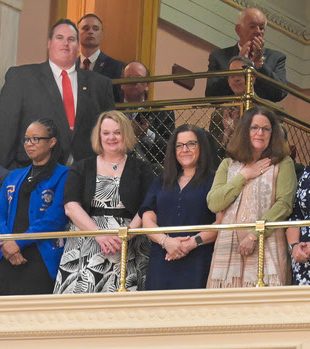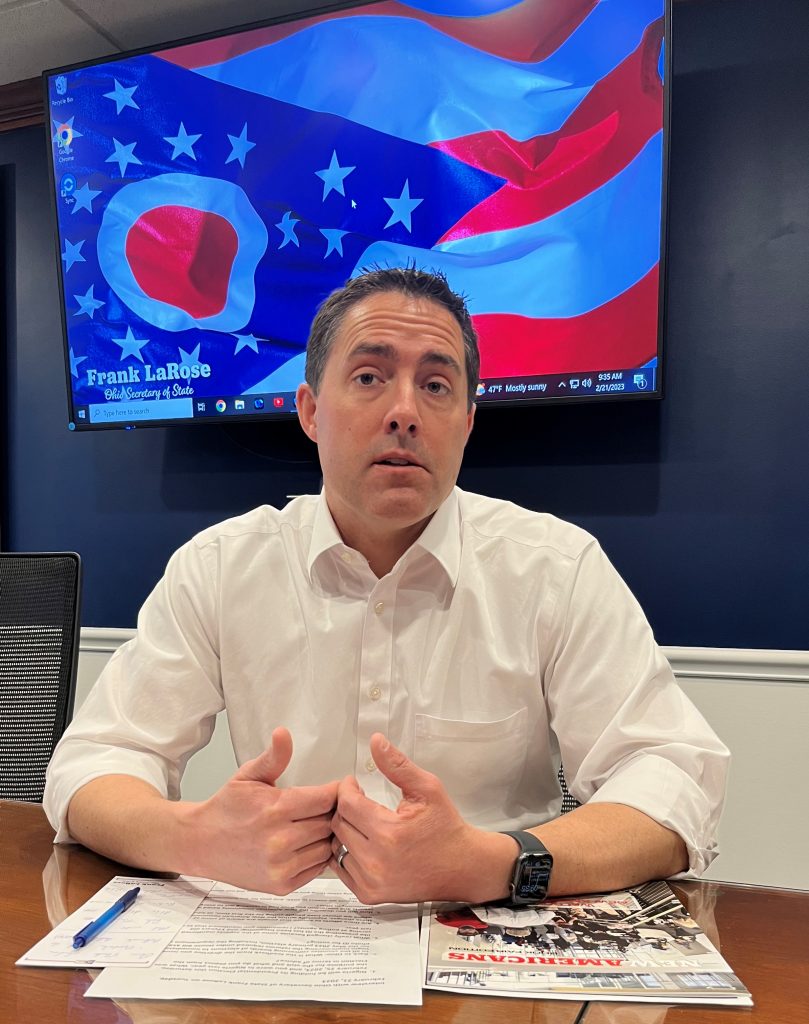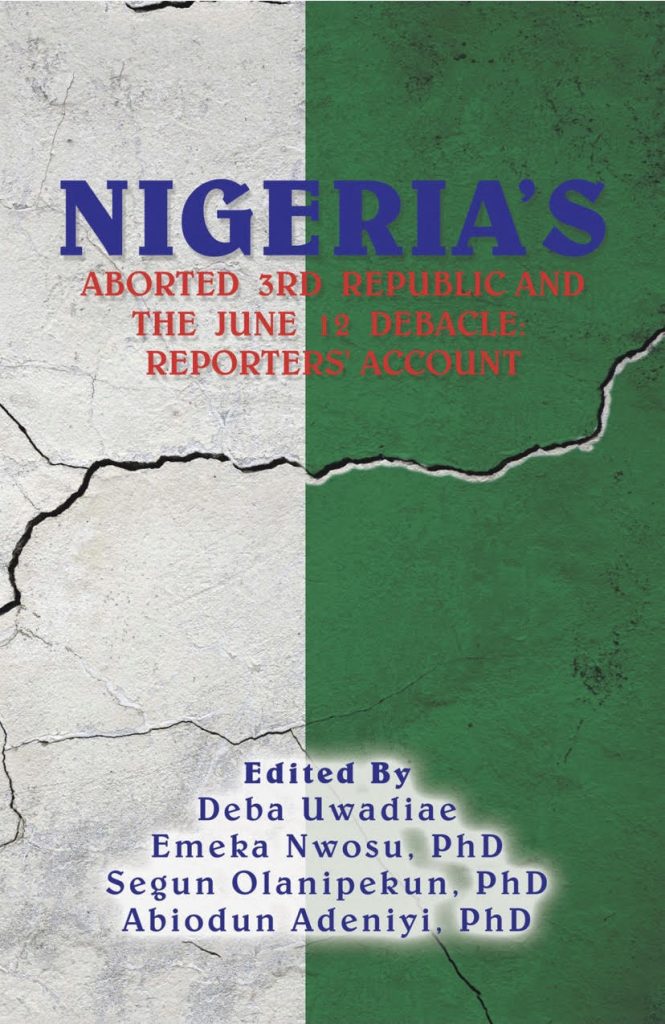- Both Federal and Ohio Law Require that the Voter Registration List Be Routinely Updated to Ensure that Only Eligible Ohioans Are Permitted to Vote
Ohio Secretary of State Frank LaRose has updated that voter registration database of the State to ensure that only eligible Ohioans are on the voter’s list and permitted to vote.
“The update fulfilled the legal responsibility to maintain the accuracy of Ohio’s voter registration database as required under both federal and state law,” said Secretary Frank LaRose.
“This process was carried out previously by Secretaries Brown, Blackwell, Taft, Brunner, and Husted, and was done in partnership with Ohio’s county boards of elections under Directives 2022-23 and 2022-35 to ensure that only eligible Ohioans can cast their vote in Ohio elections.”
In 2018, the previous administration issued two directives, one under the National Change of Address (NCOA) process and one under the supplemental process, which ordered local boards of elections to mail notices to electors who have moved or are inactive to confirm their status as a registered voter.
This action started the four-year clock for the cancellation of inactive or inaccurate registrations, meaning a voter would have six years of inactivity before they would be removed from the registration database.
Directives 2022-23 and 2022-35 put in place procedures for local boards of elections to contact identified inactive registrants. Registrants could have become fully active by taking just one of the following actions:
- Voting in a primary or general election;
- Responding to the confirmation notices from the county board of elections;
- Submitting an absentee ballot application;
- Updating or confirming their address online, by mail, or in person;
- Updating their registration online, by mail, or in person;
- Updating or confirming their address with the Bureau of Motor Vehicles;
- Responding to the mailing advising them of their pending cancellation; or
- Signing a circulated petition for a candidate or ballot issue.
Erie County will report its voter list update following its February 28, 2023, special primary election, and will not cancel any records for registrations who engage in voter activity in that election.
“Cleaning up abandoned registrations from our voting rolls isn’t just the right thing to do, it’s the law,” said LaRose. “It’s a commonsense measure that makes it easier to prevent fraud and reduces the burden and costs at our county boards of elections.”
Any person whose voter registration has been cancelled can immediately reinstate their ability to vote by reregistering on the Secretary’s registration website here or by visiting their county board of elections.
The full list of cancelled registrations can be viewed at the Registration Readiness website which is available here.
Timeline
Under Directive 2022-35 local boards of elections were directed to do the following:
- Send a “Registration Readiness” mailing by March 8, 2022 to the county’s inactive registrants to advise them to the cancellation date of July 1, 2022 for records found via the NCOA process or August 8, 2022 for records found via the supplemental process, unless action is taken. Directive 2022-35 amended the cancellation date so it would occur after the November general election.
- Compile the list of those affected inactive registrants and submit it to the Secretary of State’s office by December 30, 2022 for records found via the NCOA process or found via the supplemental process. These inactive registrations were compiled into a Registration Readiness List. This list was available to community organizations who partner with the Secretary of State to contact identified registrants in an effort to once again become fully active.
- Utilize BMV records as a way to verify the registrants’ address and restore active-voter status for those sent confirmation notices under the 2018 NCOA or supplemental Process.
Reasons for registration abandonment could include:
- Registered individual has moved out of the county or state and failed to notify their previous local board of elections.
- Registered individual has passed away.
- Registered individual has chosen not to be active in the voting process.
WHAT IS THE RISK TO ELECTION INTEGRITY IF THIS PROCESS ISN’T CARRIED OUT?
If abandoned registrations aren’t removed from the voter rolls, it creates a serious risk to election security. The more unwieldy a registration database becomes, the more difficult it is for each county board of elections to maintain election integrity and ensure voter fraud cannot take place. Since taking office in 2019, Secretary LaRose has referred 630 occurrences of potential election fraud to both the Ohio Attorney General or local county prosecutors for further investigation and potential prosecution. Among these were numerous individuals who voted in more than one location due to having two active registrations. Ohio’s aggressive efforts to keep accurate voter lists has kept this number exceedingly low. However, if abandoned registrations are not removed from the voter rolls, it will allow greater opportunity for additional fraud to take place.
WHAT DOES OHIO LAW SAY ABOUT REQUIRING THIS PROCESS TO TAKE PLACE?
It’s important to understand that once a confirmation notice has been sent, state law explicitly requires the cancellation of an inactive registration if it has not been active for over four years. In 2018, the previous administration issued two directives ordering local boards of elections to mail notices to electors who have been inactive for two years or changed their address to confirm their status as a registered voter. This action started the four-year clock for the cancellation of their registration, pending voter activity. To be clear, if Secretary LaRose did not issue this directive, and if inactive registrations don’t respond and their registrations aren’t cancelled, the Secretary of State would be explicitly breaking the law.
http://codes.ohio.gov/orc/3503.21(opens in a new window)
(A) The registration of a registered elector shall be canceled upon the occurrence of any of the following:
- (7) The failure of the registered elector, after having been mailed a confirmation notice, to do either of the following:
- (a) Respond to such a notice and vote at least once during a period of four consecutive years, which period shall include two general federal elections;
- (b) Update the elector’s registration and vote at least once during a period of four consecutive years, which period shall include two general federal elections.
Support the New Americans magazine to continue to serve our community with precise news that affect the new American, immigrant and refugee community. https://paypal.com/donate/?hosted_button_id=8LHFS78NRNJJY&source=url







































Leave a Reply
You must be logged in to post a comment.